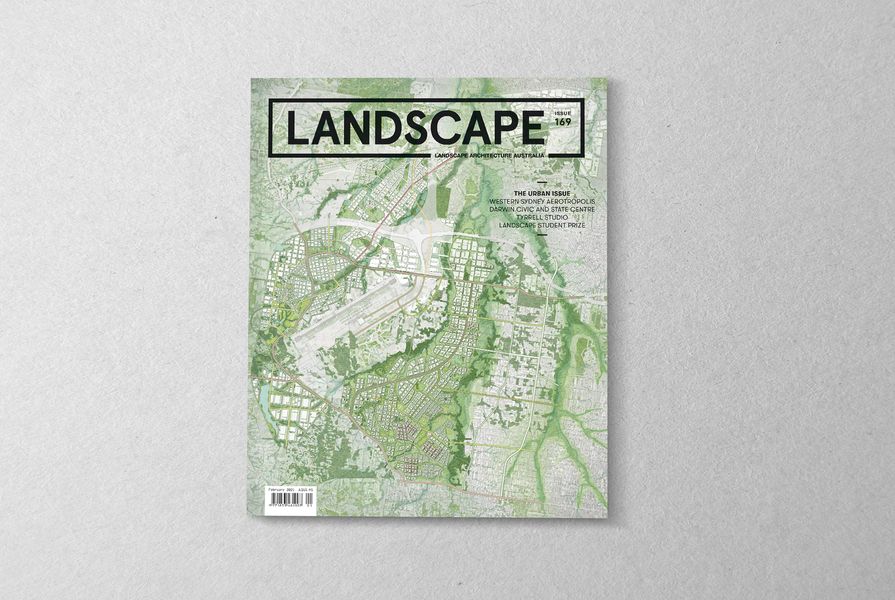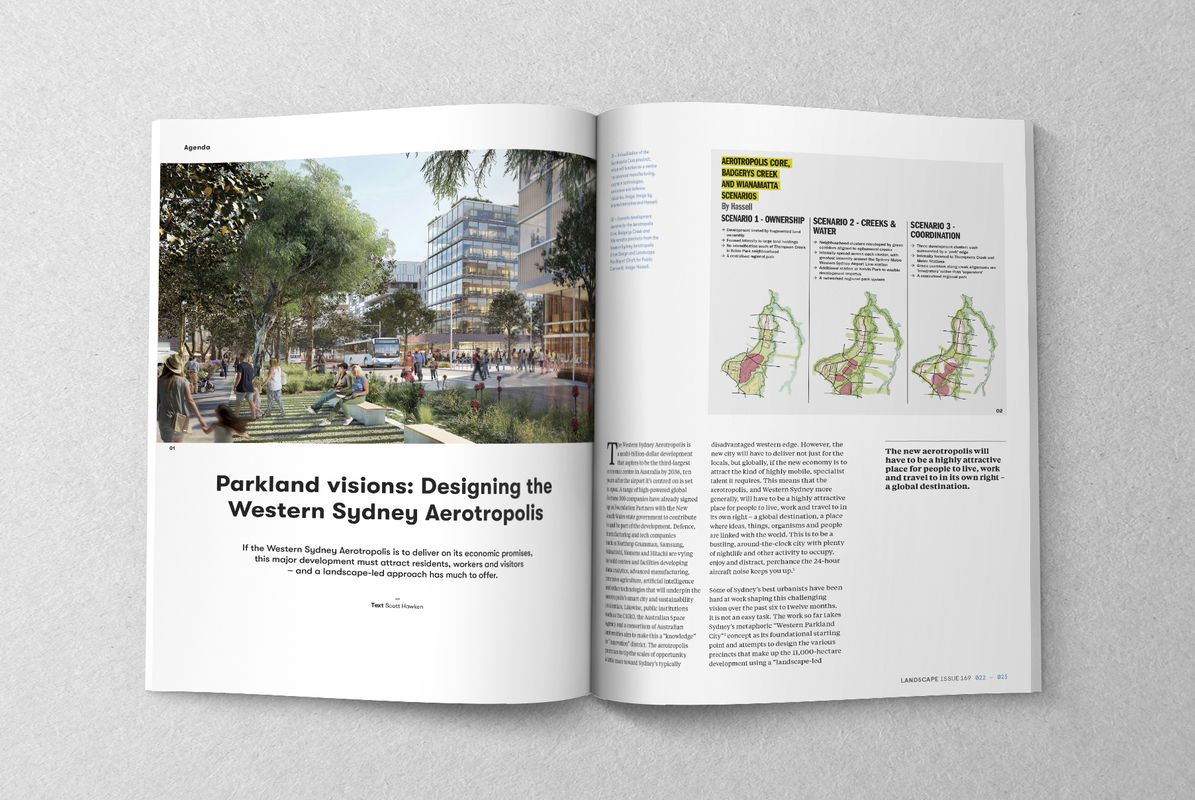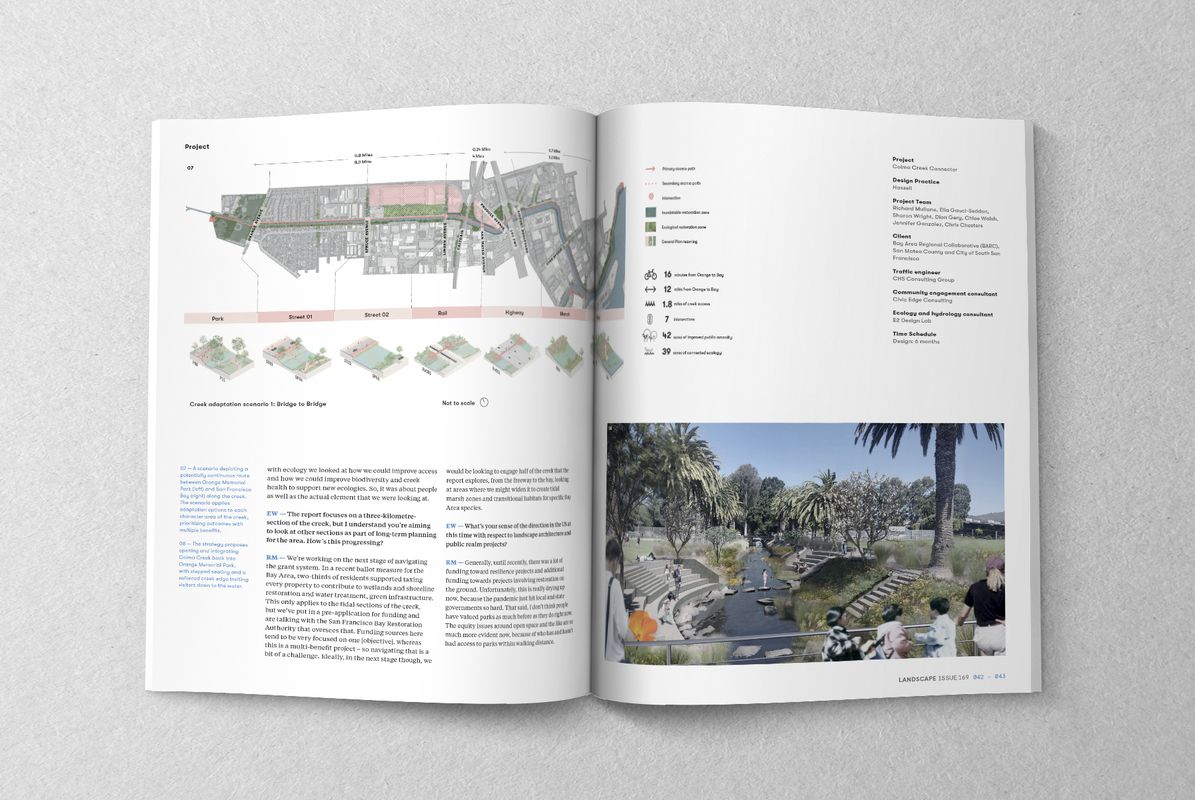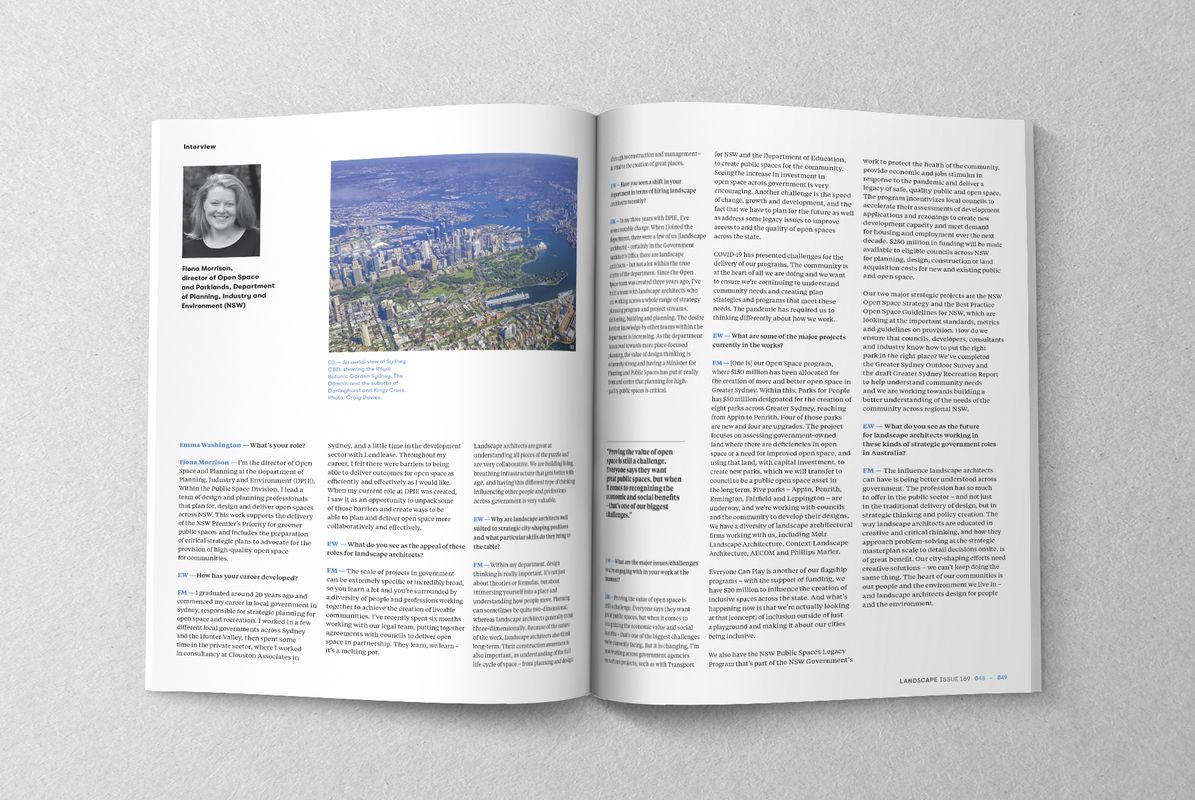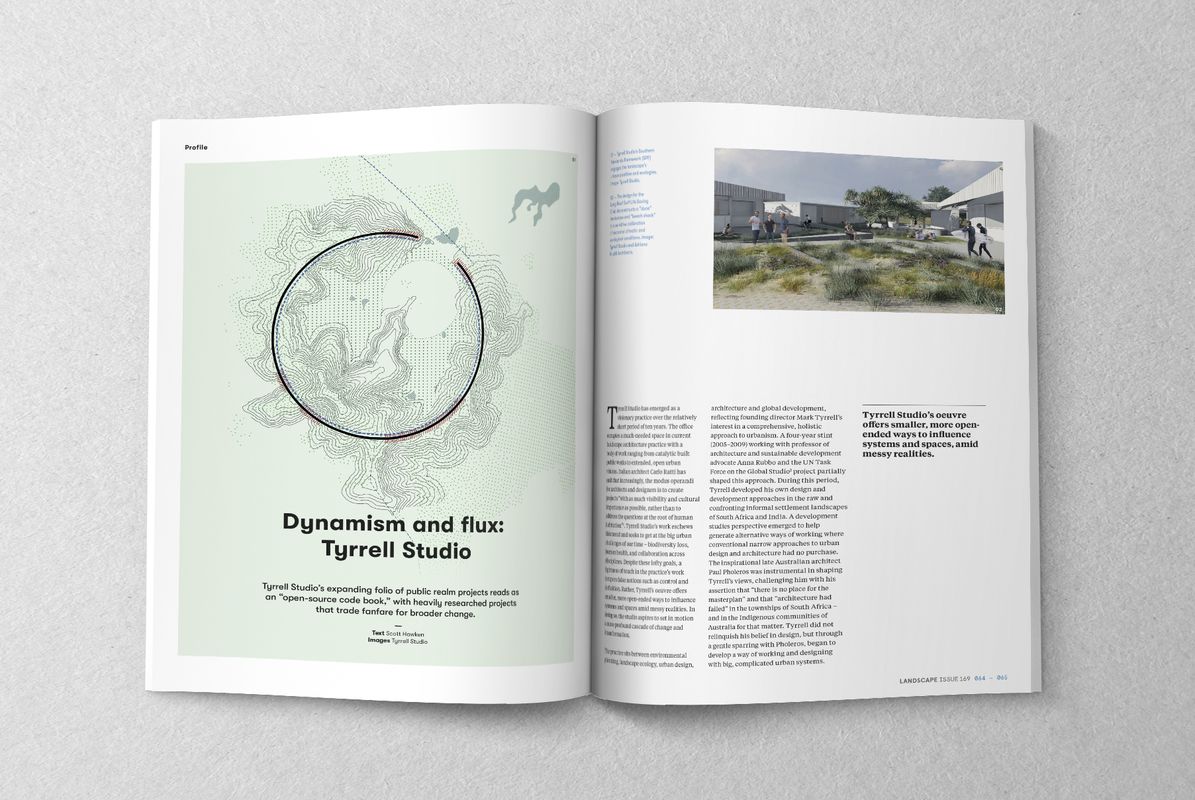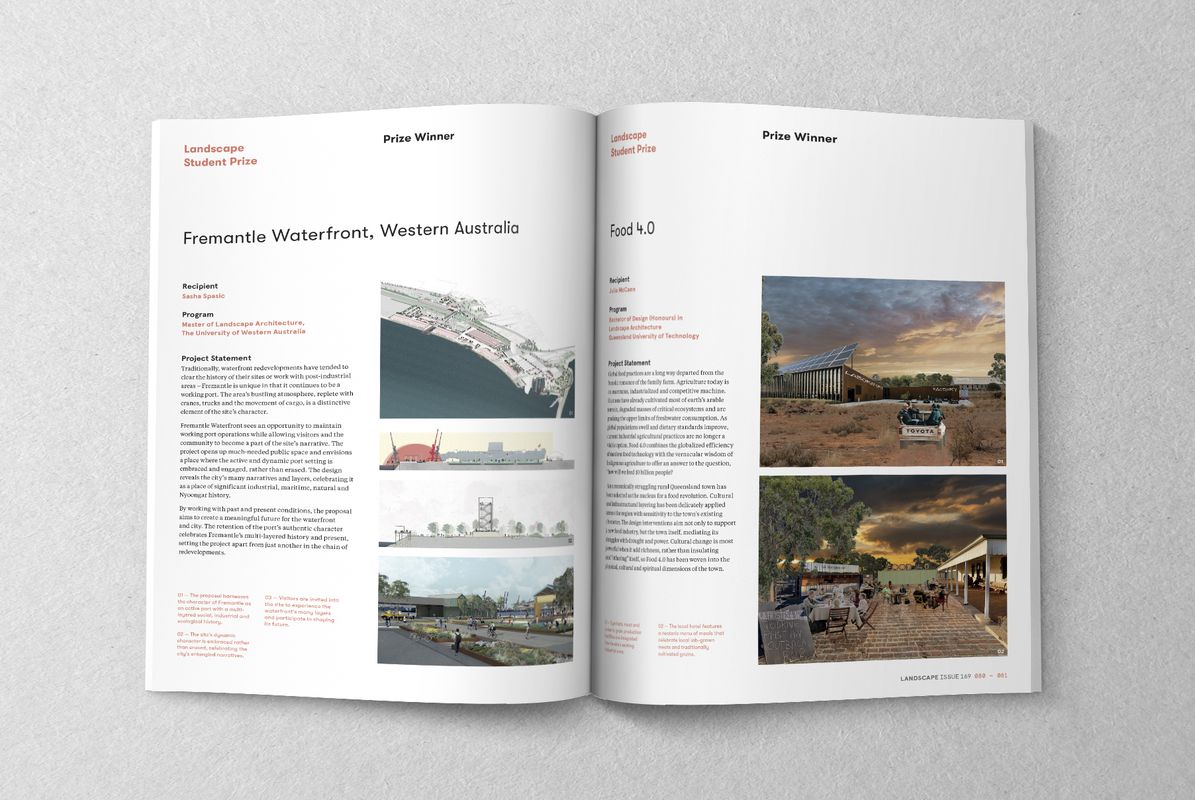Our first issue of Landscape Architecture Australia for 2021 examines the “urban” through the lens of landscape-led planning, strategy and policy. With the benefits of green infrastructure being increasingly recognized, we open the issue with a piece by Simon Kilbane that identifies the challenges facing the implementation of many recent green infrastructure projects. In his essay, Kilbane identifies the reasons behind such implementation issues and offers suggestions for how we might address them for the benefit of our cities and regions.
Landscape architecture responds to its social and political context, and recent developments at the city-shaping level constitute much-needed responses to evolving conditions. Emma Washington’s series of interviews with landscape practitioners working in major city-and region-shaping positions – Malcolm Snow, Fiona Morrison, Emma Appleton and Shaun Walsh – explores the appeal of working in the strategic government space and examines how their organizations are engaging with urban challenges through projects, policies and frameworks.
As landscape architects, planting is a core element of our profession; it’s where our roots lie. But in recent times there’s been a sense that we are becoming divorced from this aspect of practice. In an essay on planting in the public realm, Alistair Kirkpatrick reflects on the causes of this loss of control. He offers principles for how practitioners might regain agency by forging collaborations across disciplines that can generate new knowledge and approaches, and seizing upon temporary situations as opportunities for experimentation and spontaneous design. His article joins a piece by Sara Padgett Kjaersgaard that puts forward ideas for how landscape architects might be more involved in discussions around the future of peri-urban areas; and we have included an essay by Scott Hawken that considers the design of the Western Sydney Aerotropolis against the project’s aspirations and Western Sydney’s intensifying issues with heat.
A much-anticipated aspect of each February issue is the revealing of the winners of our annual Landscape Student Prize, presented in partnership with the Australian Institute of Landscape Architects. Each year, the prize honours the finest graduating projects produced in landscape architecture education across the country, with this year’s selection tackling issues of contemporary practice head-on, including the social distancing requirements of COVID-19 and the accelerating impacts of climate change.
This issue also features several projects: a major redevelopment of a Darwin civic precinct by TCL and Troppo Architects, and a research and design initiative by Hassell that explores the revitalization of a neglected urban creek as a model for broader change.
The unique challenges of 2020 have certainly wrought their effects across disciplines and scales, but we have seen many positive outcomes emerge from the pandemic as well. While 2021 will no doubt present fresh challenges, as well as a continued grappling with persisting ones, the past year has demonstrated the collective strength of the Australian profession. As I was recently reminded during the judging of this year’s Landscape Student Prize, we – as landscape architects, humans, and living organisms – are all in this together. The pause last year has prompted many of us to think deeply and at length about the ways in which we have been living, individually and collectively, within our communities. The year 2020 has shown that, across our Australian cities and globally, in landscape practice and beyond, we can make significant change if we strive and commit to it. Let’s see what more we can achieve in 2021.
– Emily Wong, editor
In this issue:
- Viewpoint: Climate positive design – it’s time. A message from Claire Martin, president of the Australian Institute of Landscape Architects.
- The great green commission. While green infrastructure projects have been gaining popularity, a gap often exists between planning and implementation. Article by Simon Kilbane.
- Parkland visions. With heat a major issue for Western Sydney, a landscape-led approach to the design of the Aerotropolis has much to contribute. Article by Scott Hawken.
- A tropical activation. TCL and Troppo’s masterplan for the redevelopment of a major Darwin precinct celebrates the site’s civic role. Interview by Emily Wong.
- Riparian resilience. A project by Hassell in South San Francisco is generating conversations around the future of urban waterways. Interview by Emily Wong.
- Big-picture thinking. A series of interviews exploring the work of landscape architects in major strategic city-shaping positions. Interviews by Emma Washington.
- Planting the agenda. What can landscape architects do to reclaim agency over planting in public projects? Article by Alistair Kirkpatrick.
- Thinking beyond urban. How can landscape architects intervene in peri-urban areas to contribute to a more sustainable future? Article by Sara Padgett Kjaersgaard.
- Dynamism and flux. Tyrrell Studio’s expanding folio of public realm projects trades fanfare for broader change. Profile by Scott Hawken.
- Landscape Student Prize. Presenting the winners of the 2020 Landscape Student Prize.
Subscriptions and back issues: Print and Digital.
Follow Landscape Architecture Australia on Twitter, Facebook and Instagram.
Email me at landscape@archmedia.com.au
Source
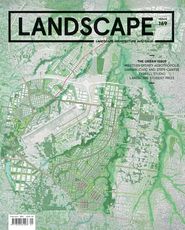
News
Published online: 1 Feb 2021
Words:
Emily Wong
Issue
Landscape Architecture Australia, February 2021

